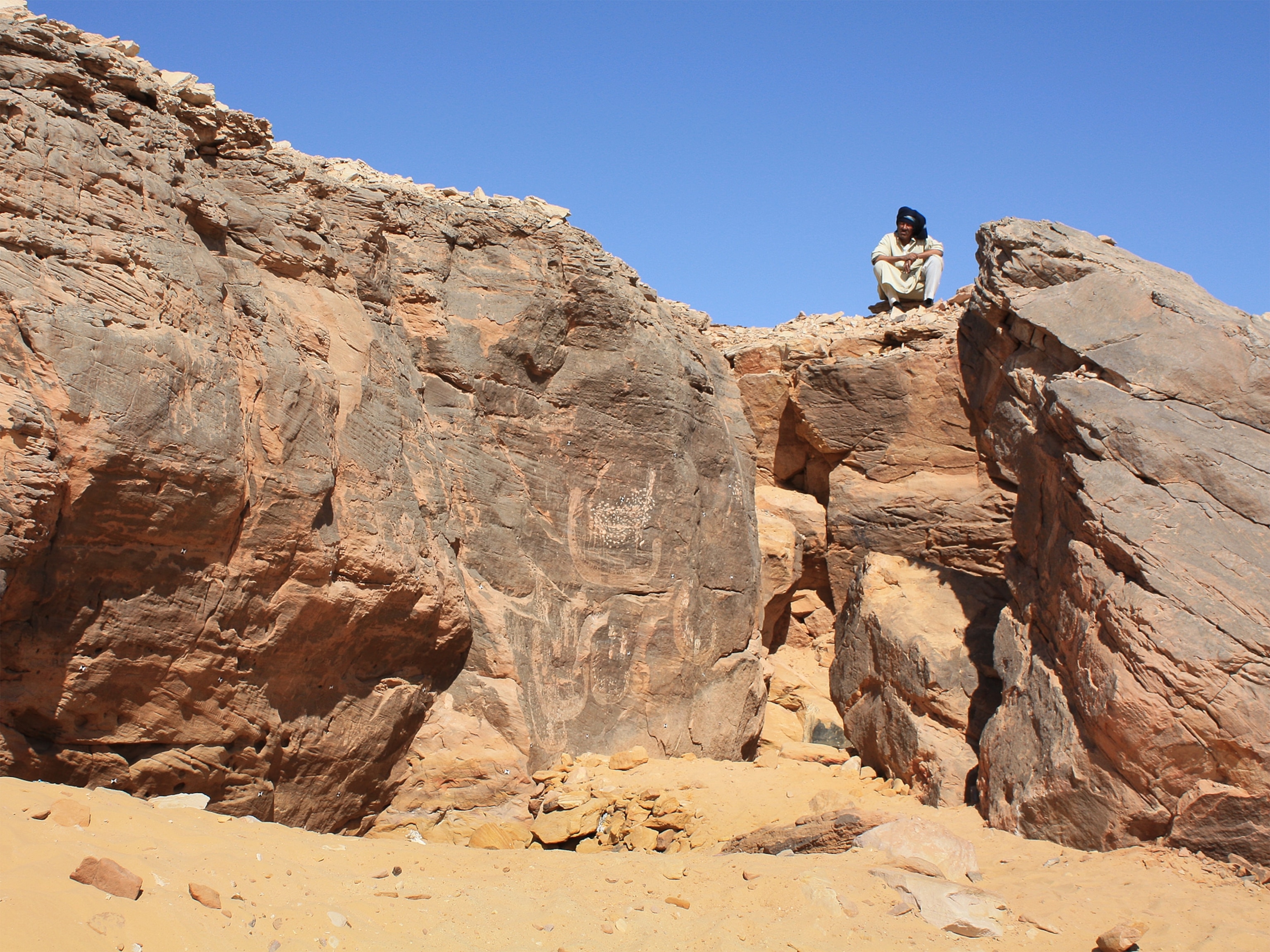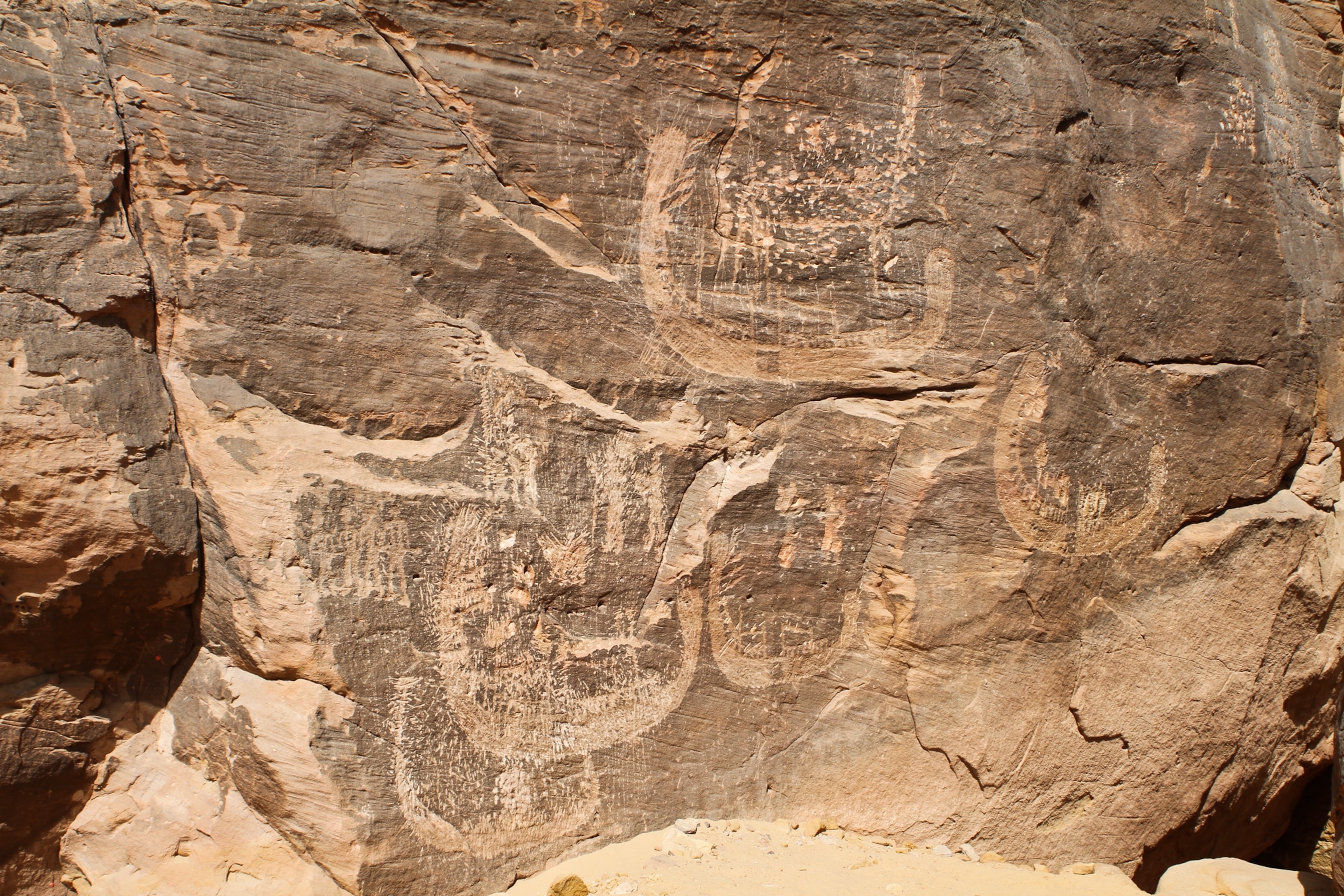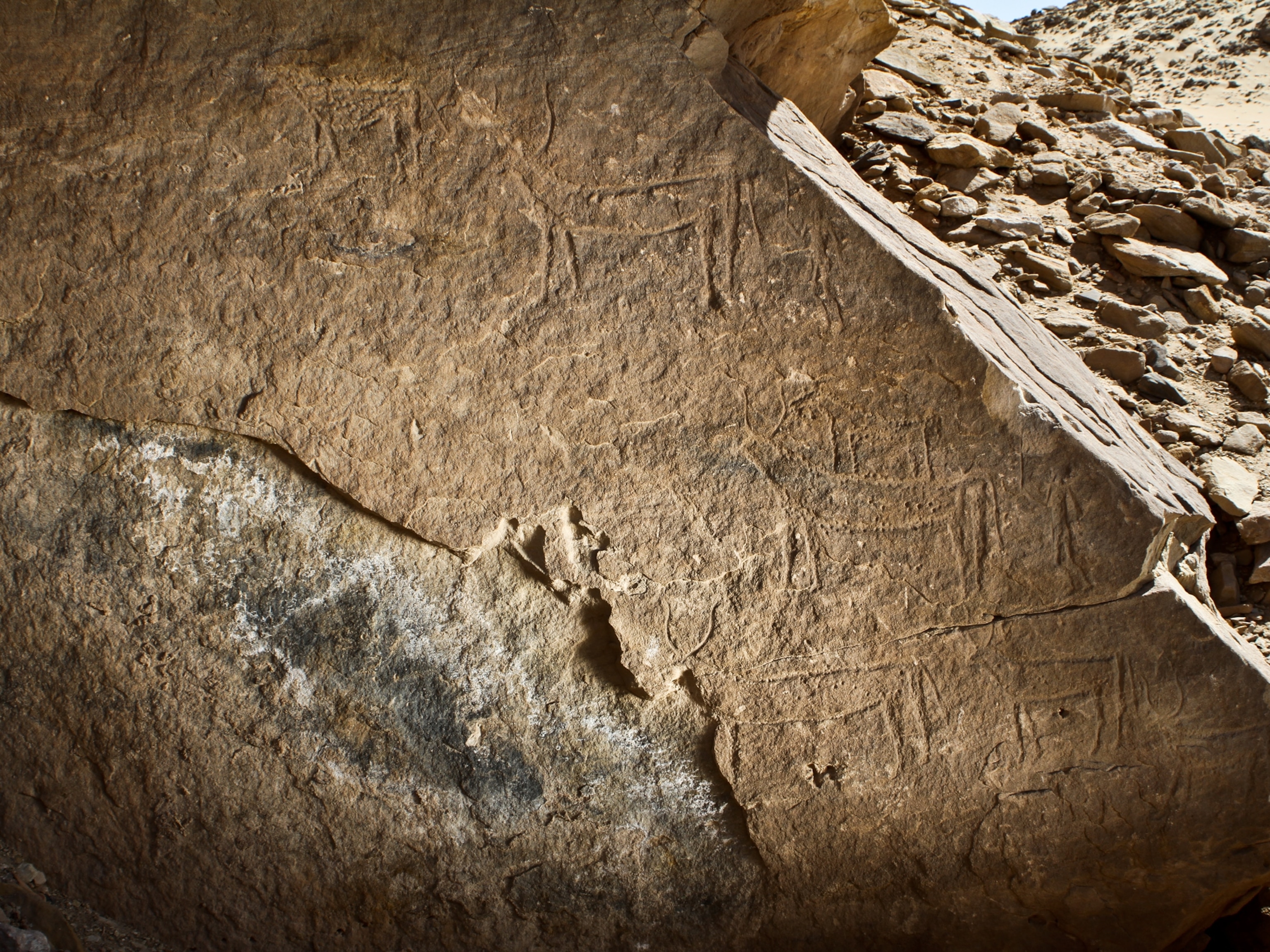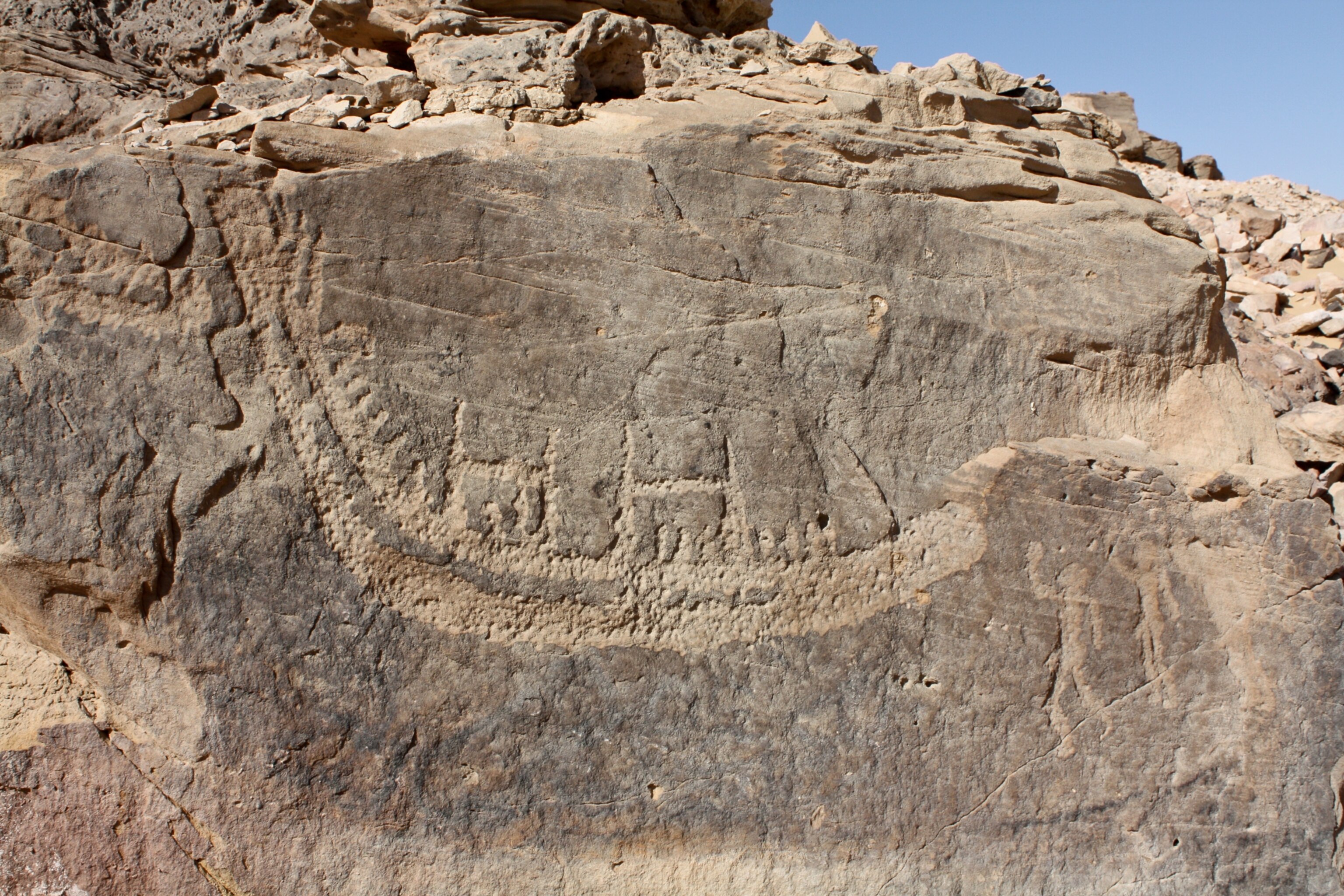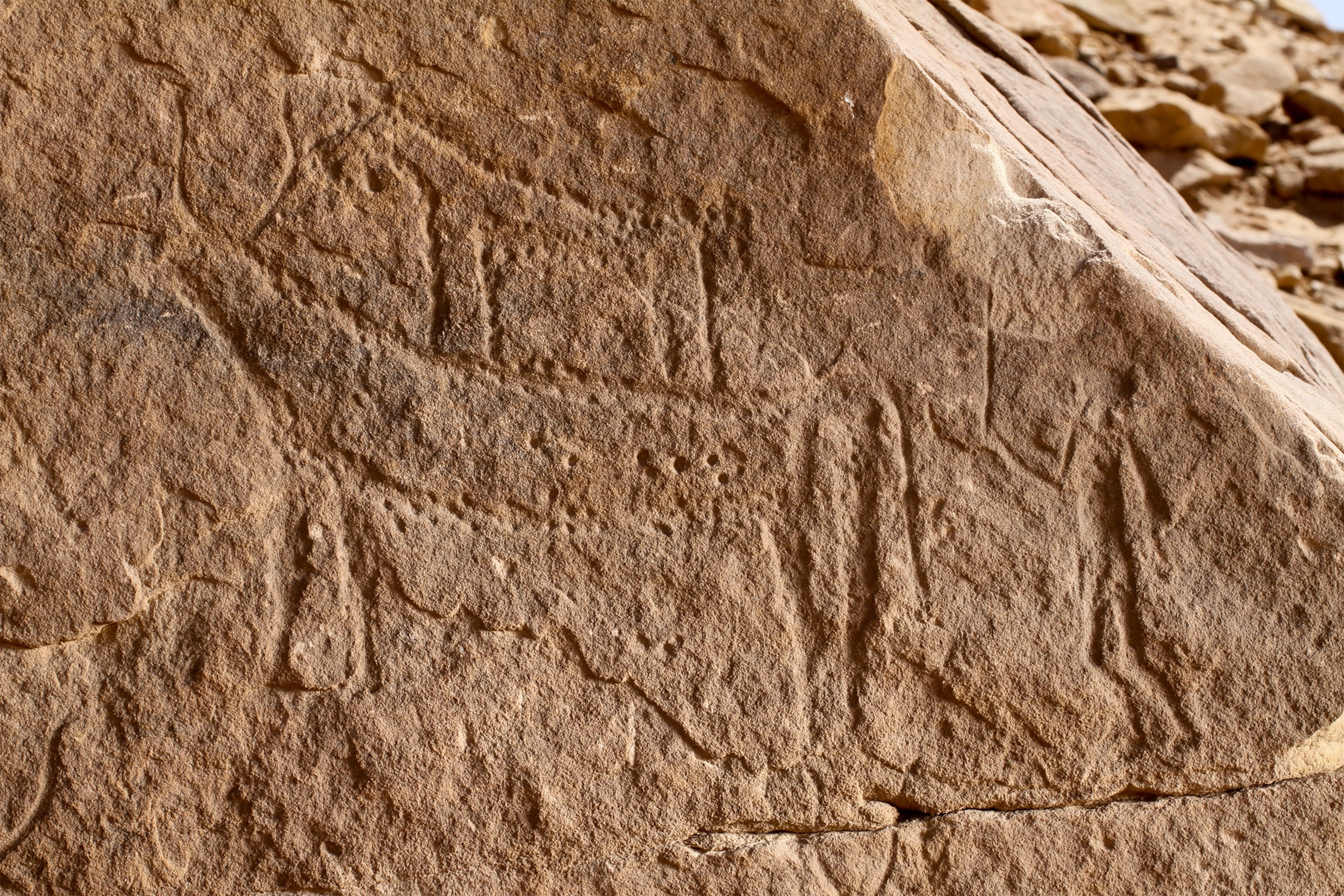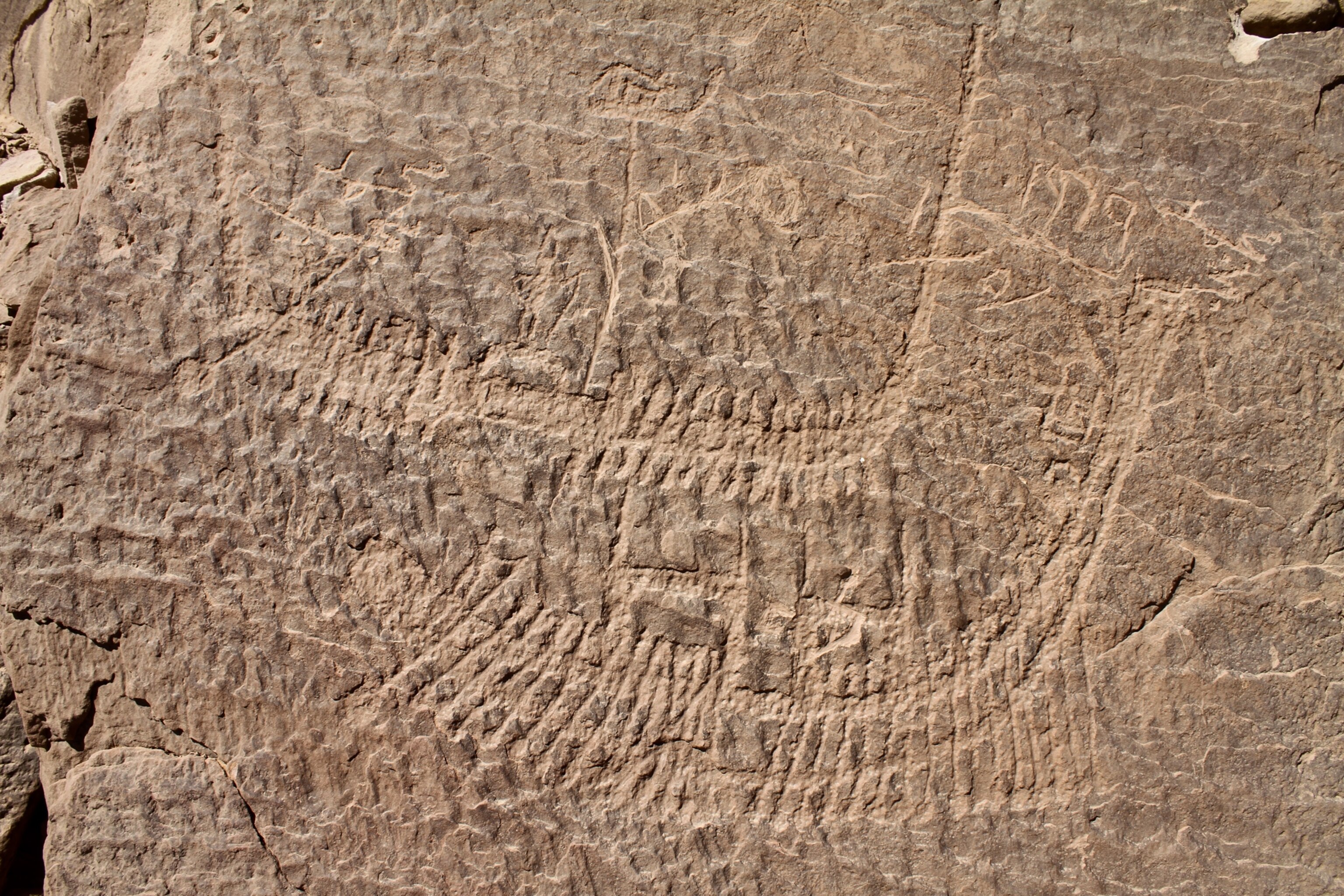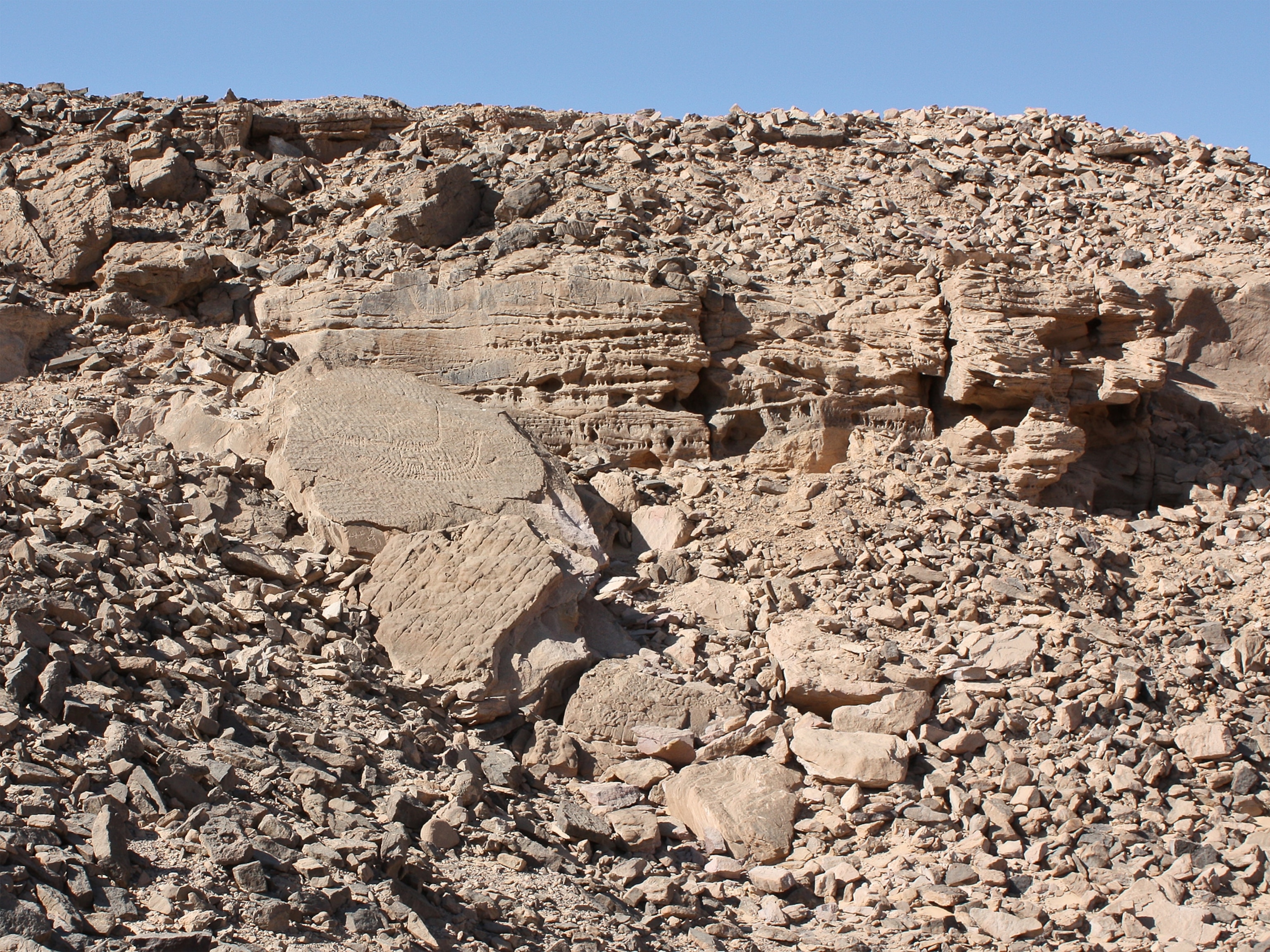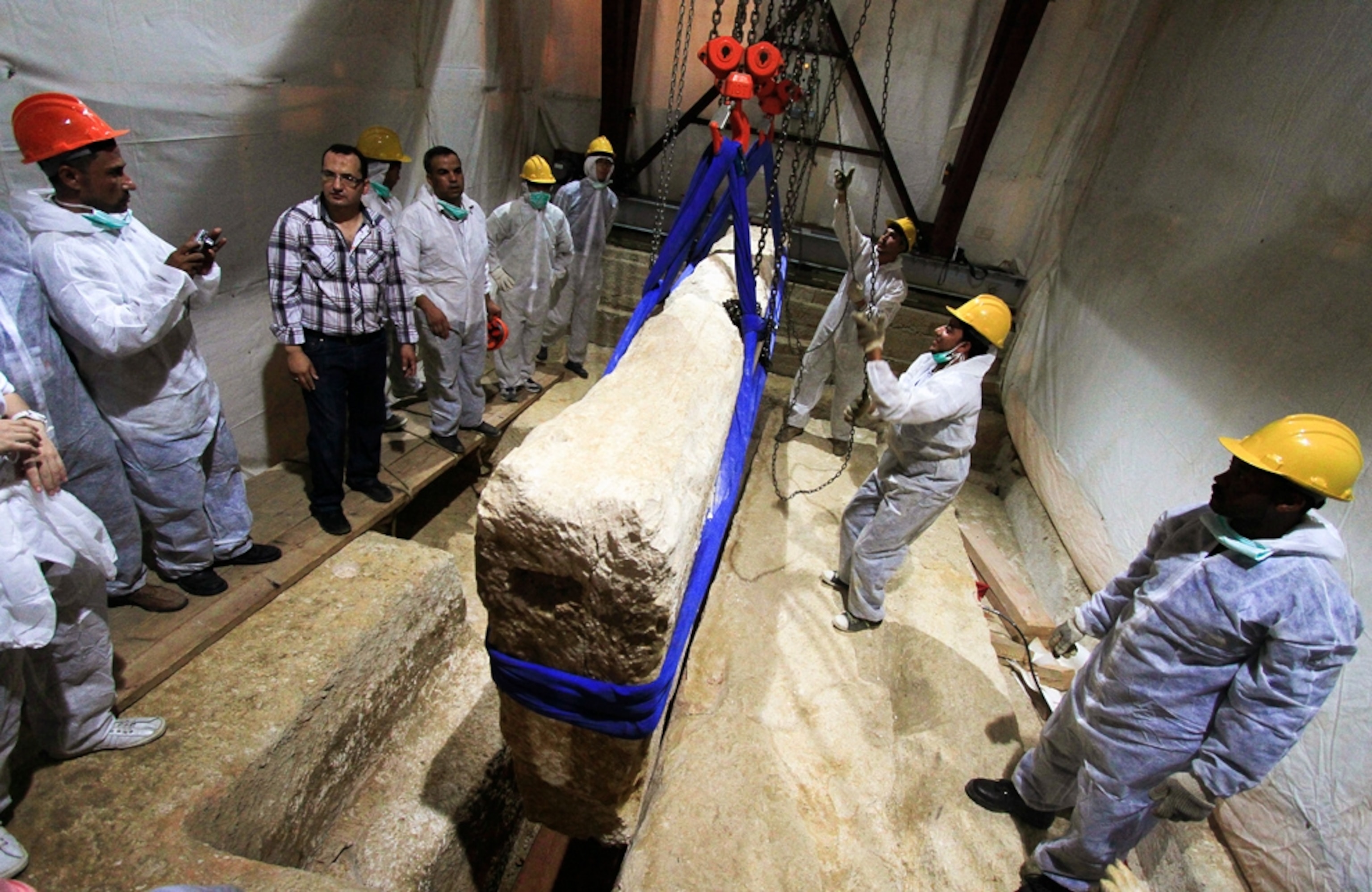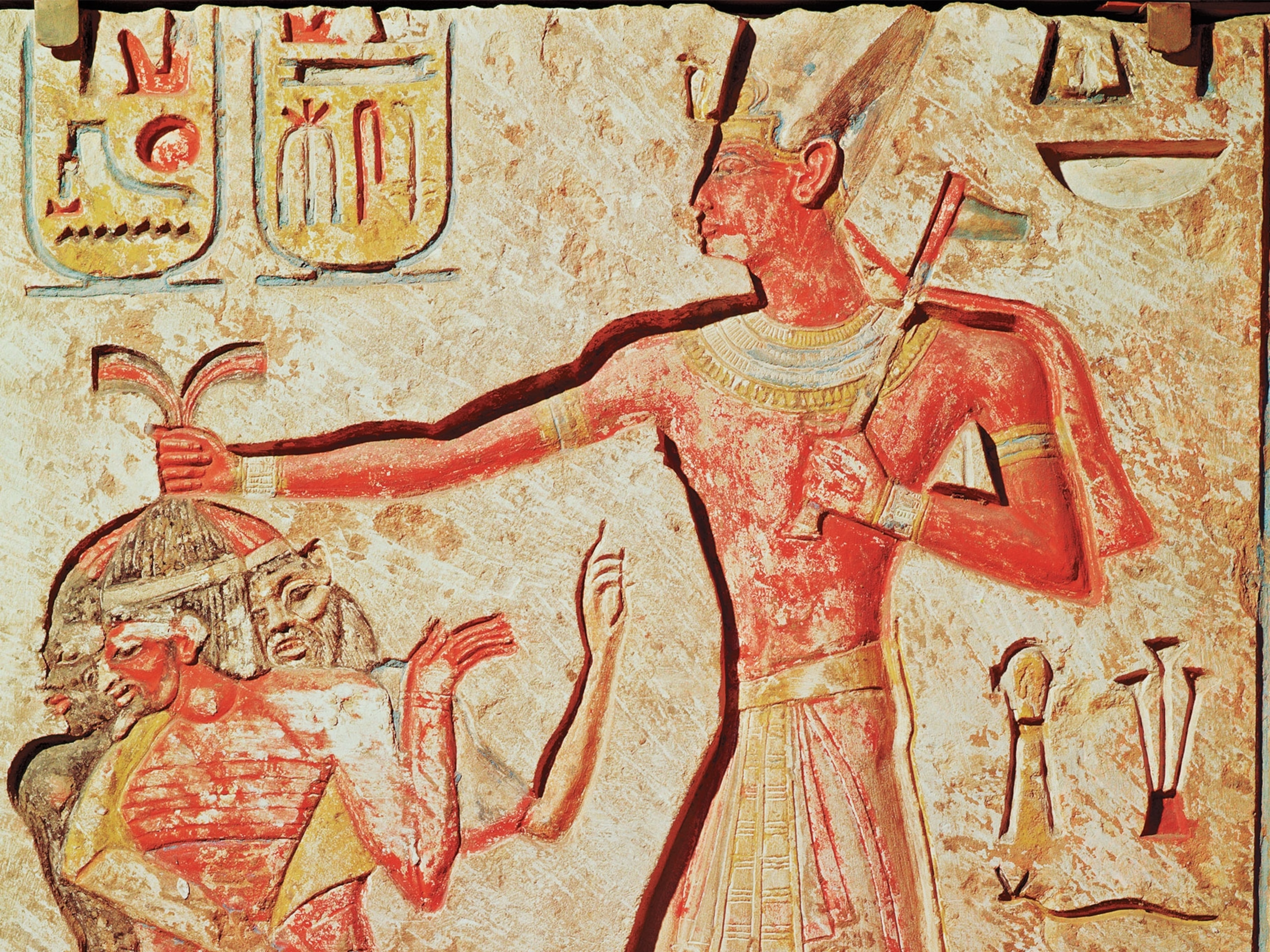This ancient rock picture near Egypt's Nile River was first spotted by an explorer more than a century ago—and then almost completely forgotten.Scientists who rediscovered it now think it's the earliest known depiction of a pharaoh.The royal figure at the center of the panel wears the "White Crown," the bowling pin-shaped headpiece that symbolized kingship of southern Egypt, and carries a long scepter. Two attendants bearing standards march ahead of him; behind him, an attendant waves a large fan to cool the royal head. A hound-like dog with pointed ears walks at the ruler's feet. Surrounding the king are large ships, symbols of dominance, towed by bearded men pulling on ropes.(See "Pictures: Secret Tunnel Explored in Pharaoh's Tomb.")The picture, which was engraved on a sheer cliff face in the desert northwest of the city of Aswan, was probably created between roughly 3200 and 3100 B.C., according to researchers who published their discovery in December's issue of the journal Antiquity.
At around the same time that the picture was crafted, northern and southern Egypt were united under the reign of a supreme monarch, or pharaoh. The pharaoh in the picture may be Narmer, the king who overcame the last vestiges of northern resistance to southern rule and is considered by many to be Egypt's founding pharaoh. (Read about Egypt’s first pharaohs in National Geographic magazine.)This rock art picture, known as tableau 7a, is nearly ten feet (three meters) wide. That makes it the largest of the pictures at the site, called Nag el-Hamdulab after the neighboring village.Earlier Egyptian art tends to show not kings themselves, but emblems of royal or divine power, said Yale University's John Darnell, one of the paper's authors. An image of a bull or falcon, for example, was often used as a stand-in for the king. When human rulers were shown, they were small and peripheral, as if they didn't count for much.But here, for the first time, the king is dominant. "It's an amazing depiction, artistically and textually, of the birth of dynastic Egypt," Darnell said.The change in the king's depiction reflects changes in the nature of kingship at the time, said Yale University archaeologist Maria Gatto, another author of the paper."He's not just a regular man like everyone else," she said. "He's a god, someone special who can help you be in contact with the supernatural."—Traci Watson
